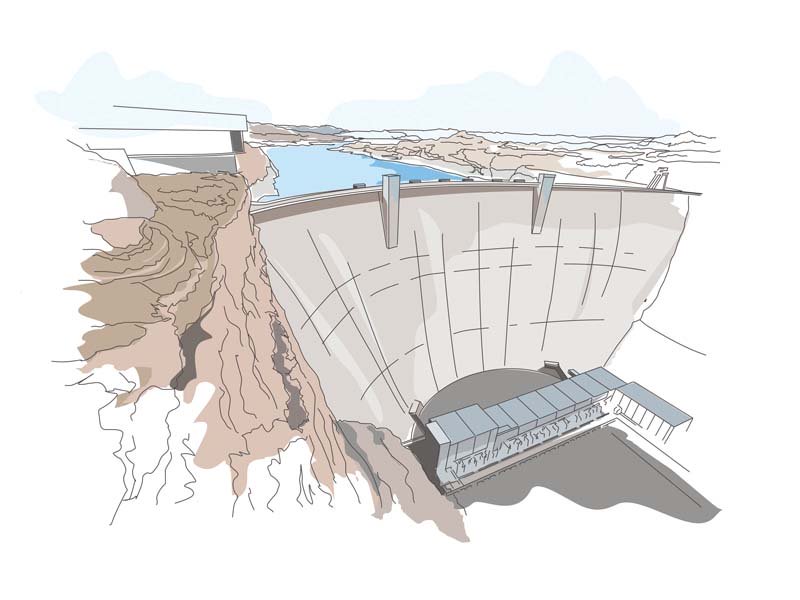
The latest fiasco involving Tarbela extension project shows how a project owner with an unrealistic idea of fast-tracking becomes an unhappy client at the end of the day.
Tarbela dam is one of the world’s largest structures that not only stores water for irrigation purposes but also generates low-cost hydropower as a by-product. The dam has five tunnels and currently hydropower units are installed on three of its tunnels.
Tarbela-4 extension hydropower project (T4HP) aims to install three turbines and generators, each of 470MW, on tunnel 4 that would add a cumulative 1,410MW to the national grid – at a project cost of $914 million with 92% of financing coming from the International Bank for Reconstruction and Development (IBRD) and the International Development Agency (IDA) respectively. The original project completion date was June 30, 2018.
Similarly, the Tarbela-5 extension hydropower project (T5HP) will add another 1,410MW to the system by constructing three turbines on its tunnel 5 by June 30, 2022. T5HP was approved in Sep 2016 after Asian Infrastructure Investment Bank (AIIB) and World Bank agreed to provide a financing of $690 million
T4HP and T5HP projects are considered as a low-hanging fruit being the least cost option (around $25 per MWh) for electricity generation.
The government, however, has been pushing hard to complete the T4HP project a year before its original schedule. Wapda chairman Zafar Mahmood resigned in August 2016 when he could not commit to a timely completion of the Neelum-Jhelum project and an early completion of Tarbela-4 extension project. A variation order was signed by the government under its acceleration programme but in October 2016, the contractor refused to meet the deadline. The failure of acceleration scheme was attributed to geological compulsions and unexpected water flow.
Now a contractor has issued a work suspension notice when the government tried to recover the incentive bonus paid in advance.
Sinohydro Group of China is the prime contractor for civil works while the consortium of Voith Hydro of Germany and China has the contract for Electrical and Mechanical work packages. A joint venture of MacDonald and Coyne et Bellier is responsible for project supervision in the capacity of project consultants.
Why fast-tracking fails?
Fast tracking involves compression of project schedules through overlapping activities and reduction in activity durations. It sometimes involves sequencing of construction activities such that construction work on some work packages is started even though the design process is not completed on other portions of the project.
Fast tracking aims to cuts the overall project schedule and save project costs in a sense that the project starts generating revenues earlier – reducing the payback period. However, in the case of T4HP, the payback period was already around three years - which is less than industrial average.
The clock speed required for a fast-tracked project leaves little room for the planning phase as thorough reviews can’t be conducted when time between construction and design is very short.
When design work is not complete, it has an impact on cost due to continuous addition of scope as the project evolves. Very often a lot of unanticipated changes occur during fast track construction - resulting in overruns.
In case of fast-tracking, megaproject contracts need to explicitly address these extra risks and assign responsibilities among project stakeholders. When such a contractual framework for fast-tracking is missing, it is difficult to hold the contracting party responsible for overlooked work, delay damages, design errors, change orders, construction rework and inaccurate costing.
Unfortunately even standard agreements published by American Institute of Architects (AIA), the Associated General Contractors of America (AGC) and FIDIC (International Federation of Consulting Engineers) that are used worldwide have little provisions to address risks posed by a fast-tracking approach.
Even though most fast-tracked projects are governed by a design-build contract, contract documents do not quite fit for fast-tracking.
In a nutshell, Wapda has little experience of managing projects with a “fast-tracked” status as it requires specialised skills in contract management, extensive coordination between all stakeholders and a real-time monitoring and evaluation system.
The writer is a Cambridge graduate and is working as a management consultant.
Published in The Express Tribune, January 16th, 2017.
Like Business on Facebook, follow @TribuneBiz on Twitter to stay informed and join in the conversation.



1732105641-0/BeFunky-collage-(78)1732105641-0-165x106.webp)



1732084432-0/Untitled-design-(63)1732084432-0-270x192.webp)









COMMENTS (1)
Comments are moderated and generally will be posted if they are on-topic and not abusive.
For more information, please see our Comments FAQ